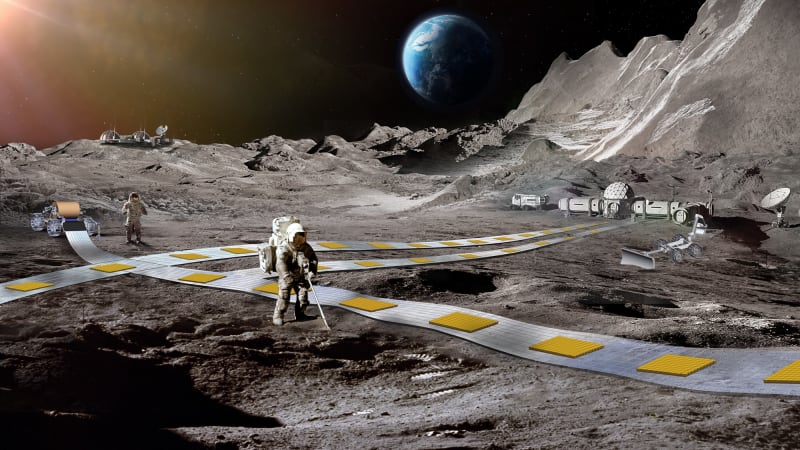NASA wants to build a floating railway on the moon

NASA’s “Moon to Mars” project aims to establish a human settlement on the surface of the moon and ultimately reach the Red Planet. Making it happen safely and comfortably requires setting up an infrastructure that could include a floating railway used to move tools and materials.
The technology is called Flexible Levitation on a Track (FLOAT), and it’s described as “a durable, long-life robotic transport system.” NASA has identified two main use cases: It can transport regolith mined for construction purposes, which would save astronauts the trouble of flying in cement and cinder blocks from Earth, and it can move payload such as tools from the lunar base to other landing zones or outposts.
You’re on the wrong track, literally and figuratively, if you’re picturing a big locomotive and a mile-long string of graffiti-ridden train cars. In some ways, it’s closer to the Rainbow Road level you find in nearly every version of Mario Kart. The FLOAT system relies on unpowered magnetic robots that levitate over a three-layer flexible film track, according to NASA. One is a graphite layer that allows the robots, which have no moving parts, to float using diamagnetic levitation. Another is a flex-circuit layer that generates the electromagnetic thrust that moves the robots down the tracks. The third is optional: It’s a thin-film solar panel that makes power for a hypothetically nearby lunar base.
One of the advantages of this system is that it rolls out — it almost sounds like a big rug. There’s no need to prepare the ground, which saves time and leaves the surface of the Moon relatively intact, yet a large-scale FLOAT system will be capable of moving over 200,000 pounds of payload several miles per day. It will be fully autonomous, too, so don’t look for a “moon train conductor” job offer on LinkedIn.
Engineers have several hurdles to clear before the FLOAT system becomes a reality. The next step is to design, build, and test a sub-scale prototype and investigate what effect factors like temperature, radiation, and lunar regolith simulant contamination have on the system’s performance. Manufacturing-related questions need to be answered as well. You can’t build the FLOAT system with off-the-shelf parts.
The FLOAT system is one of several ideas NASA selected for Phase II of the NASA Innovative Advanced Concepts (NIAC) project, whose goal is to encourage the development of new technologies that might lead to breakthroughs in space exploration programs, including “Moon to Mars.” Another idea is the Pulsed Plasma Rocket, which could put a human on Mars. The spacecraft is capable of making the trip to Mars in about two months, according to simulations. Alternatively, it’s powerful enough to transport heavy spacecraft across the galaxy.



